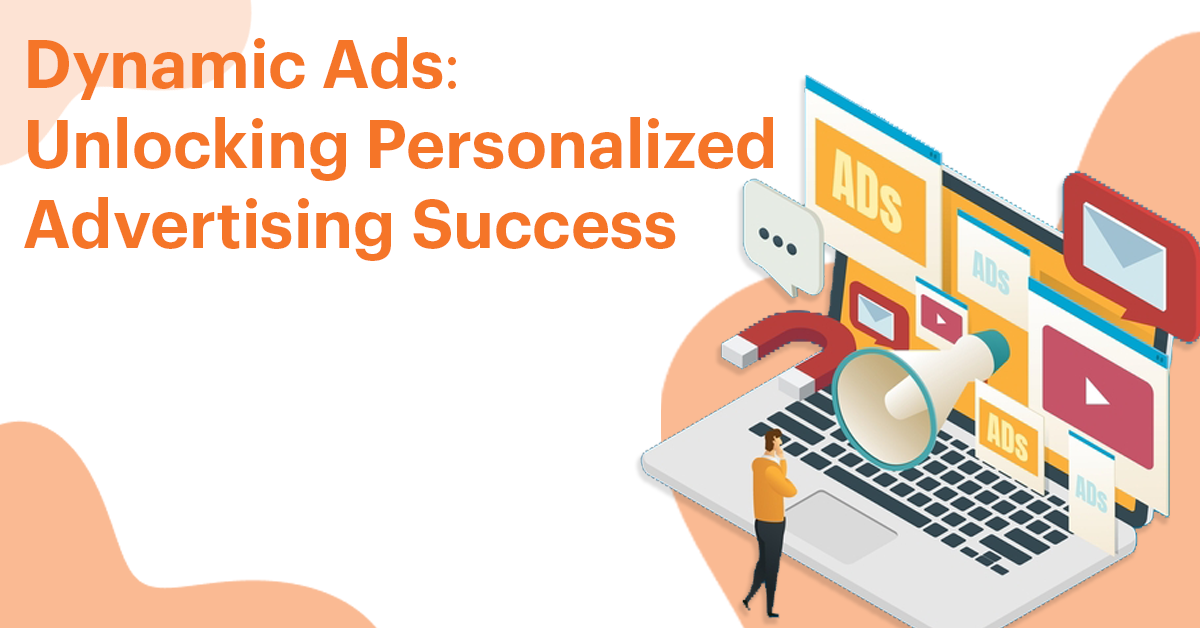Dynamic ads, often referred to as dynamic banners or creatives, serve as an essential resource in digital advertising. The key benefit is that they automatically update their content or promotions according to each viewer’s most relevant and successful image, copy, or landing page.
The present article discusses dynamic ads, how they differ from static ads, how they work, and their numerous benefits.
About Dynamic Ads
Dynamic Ads has this functionality description. Making use of an individual’s information—demographics, behavioral data like browsing activity, geolocation, and even the kind of products they prefer—in real time to adjust the information shown to them, making them relevant and appealing, independent of the device or channel on which they are displayed, it tailors the advertising experience uniquely.

Difference Between Static and Dynamic Ad
Dynamic advertising are the opposite of static ads. For example, a viewer sees a static banner or creative that doesn’t change from one viewer to another, but the similarity ends there. The ads will continue updating in real time to the user’s needs and preferences. This dynamic adaptation allows dynamic ads to reach out to new audiences with pinpoint accuracy—to target the suitable ads to the right customers at the correct times.
| Static Ads | Dynamic Ads |
| Provide limited insights from one set of performance data | Provide detailed metrics for each variation, aiding optimization. |
| static ads deliver the same message to every viewer | They automatically adjust their content to align with the preferences of individual viewers |
| Ad targeting is limited to basic demographics | Advanced ad targeting |
| Low Engagement | High Engagement |
Working Dynamic Advertising
A Dynamic Ad looks the same as a regular banner ad—image, text, promotion, product collection—but rather than producing a dozen different ones, an advertiser makes a single template for these ads leverage a network of publishers to showcase personalized content. By leveraging demographic and behavioral data gathered during the session, this template generates personalized ad content automatically.

Tools Enhancing the Effectiveness of Dynamic Advertising
Dynamic Remarketing: This tool shows specific products or offers to people who have visited your site before, showing them items based on previous interest. It becomes very apt for cross-selling or abandoning carts.
Contextual Targeting: Ads placed dynamically in front of a user in a location they’re likely to visit, with content created on the fly based on the page’s context.
Sequential Storytelling: Serving ads in sequence to walk potential customers through a story that will eventually have them convert on a landing page.
User Journey Tracking: The tracking pixels display advertisements reflecting the position of the user in the funnel and the general customer journey.
The Benefits of Dynamic Ads
Running dynamic ads on your site has many advantages
Save Time and Lower Costs:
- Efficiency: Dynamic ads allow you to promote a broad range of products, imagery, and creatives without reconfiguration for each ad. This can reduce the time and resources used to manage your advertising campaigns.
- Cost-Efficient: Dynamic ads make the process of personalization automatic, empowering you to achieve more of your marketing goals more efficiently and faster, ultimately decreasing costs.
Boosting Conversion Rates for Better Sales
- Relevance: Content that is tailored and relevant concerning echoing individual shopper preferences surges purchase intent, product familiarity, and brand favorability.
- Engagement: Personalized ads are more engaging, increasing conversion chances and fostering customer loyalty.
Increase Your Reach and Engage More Users
- Advanced Targeting: Combined with programmatic advertising at advanced levels, dynamic banner ads would drive your site traffic and conversions even more by reaching more users, including look-alike ones.
- Engagement: With dynamic ads, you can connect with new potential customers who are more likely to be interested in your products or services.
Maximizing the Effect of Dynamic Advertising
Maximize Dynamic Advertising: Top Best Practices for Success
- Comprehensive Data Collection: Gather extensive user behavior, preferences, and demographic data to power dynamic ad campaigns.
- Real-Time Analysis: Employ real-time analysis to ensure that ads stay up-to-date and relevant in real-time. Creative Templates: Use creative templates to leverage user insights in an engaging format.
- Versatile Templates: Craft versatile ad templates that accommodate various content types and formats. A/B Testing: Run A/B tests on each ad variation to see which performs better, continually optimizing your templates as you do this process. Personalization: Bring personalization elements to each of your ads by customizing each to each audience segment.
- Tailored Content: Tailor your ads to each user’s preferences and behaviors for optimal success. Dynamic Elements: Incorporate dynamic elements, such as product recommendations, location-based offers, and messaging that resonate directly with consumers.
- Integration with Marketing Channels: Integrate Dynamic Ads into Your Marketing Strategy for consistency across channels. Cross-Device Compatibility.
Dynamic advertising offer businesses a powerful means to engage users by tailoring content to their preferences and behaviors. By understanding the distinctions between dynamic and static ads, how dynamic ads work, and their many advantages, businesses can fully capitalize on dynamic’s benefits – saving both time and costs, improving conversion rates and customer loyalty, and expanding audiences, resulting in tremendous digital marketing success.

